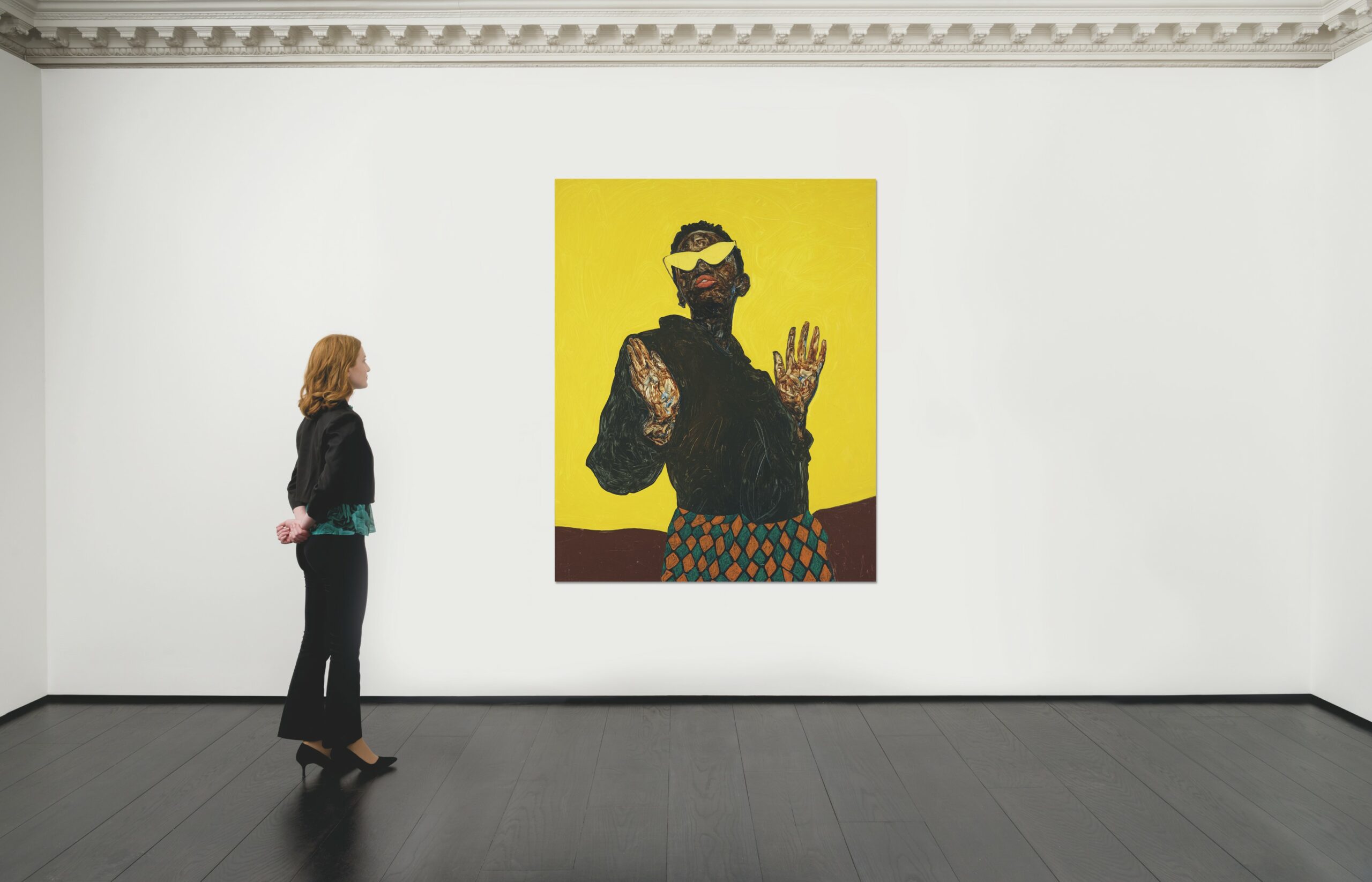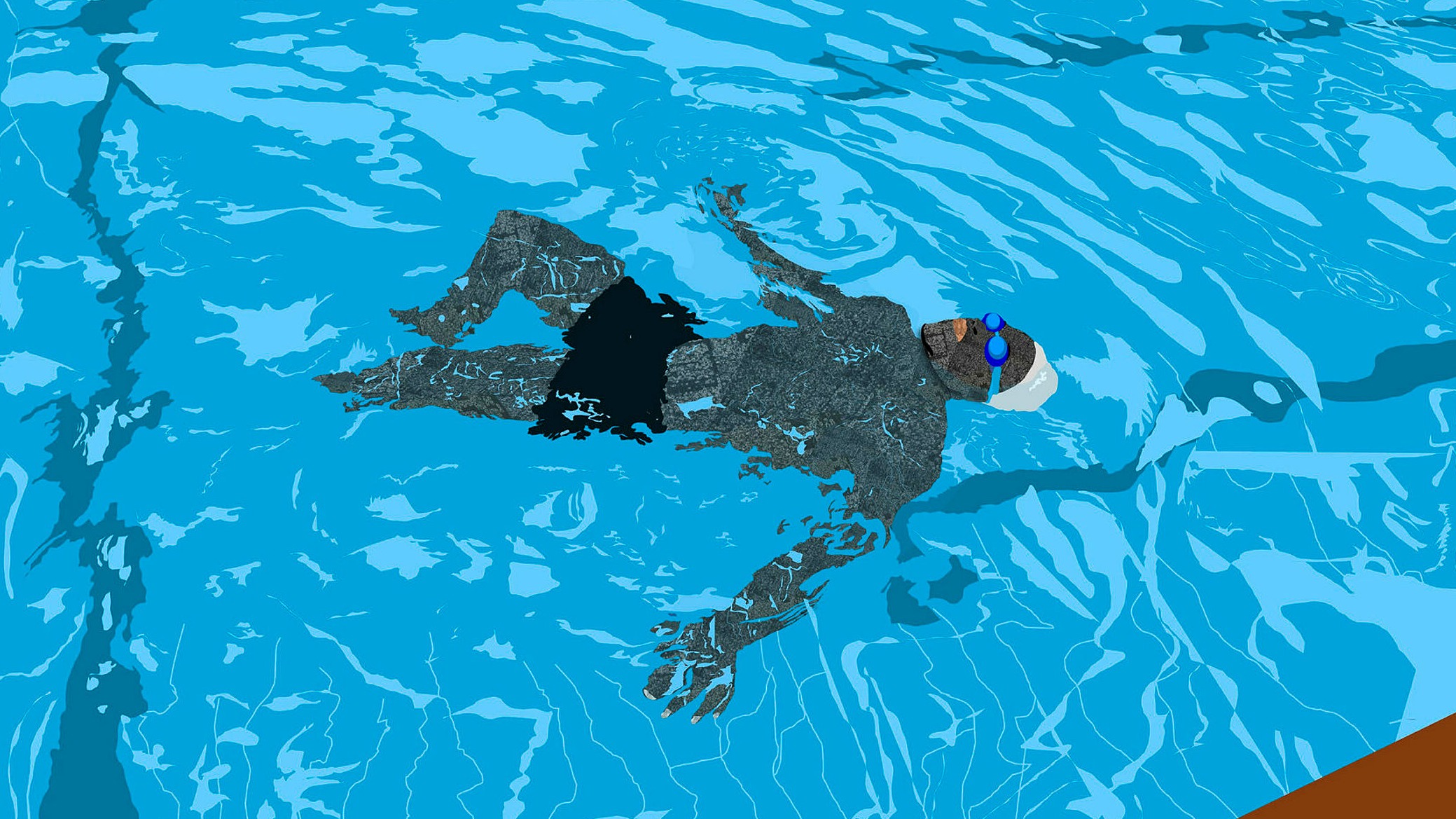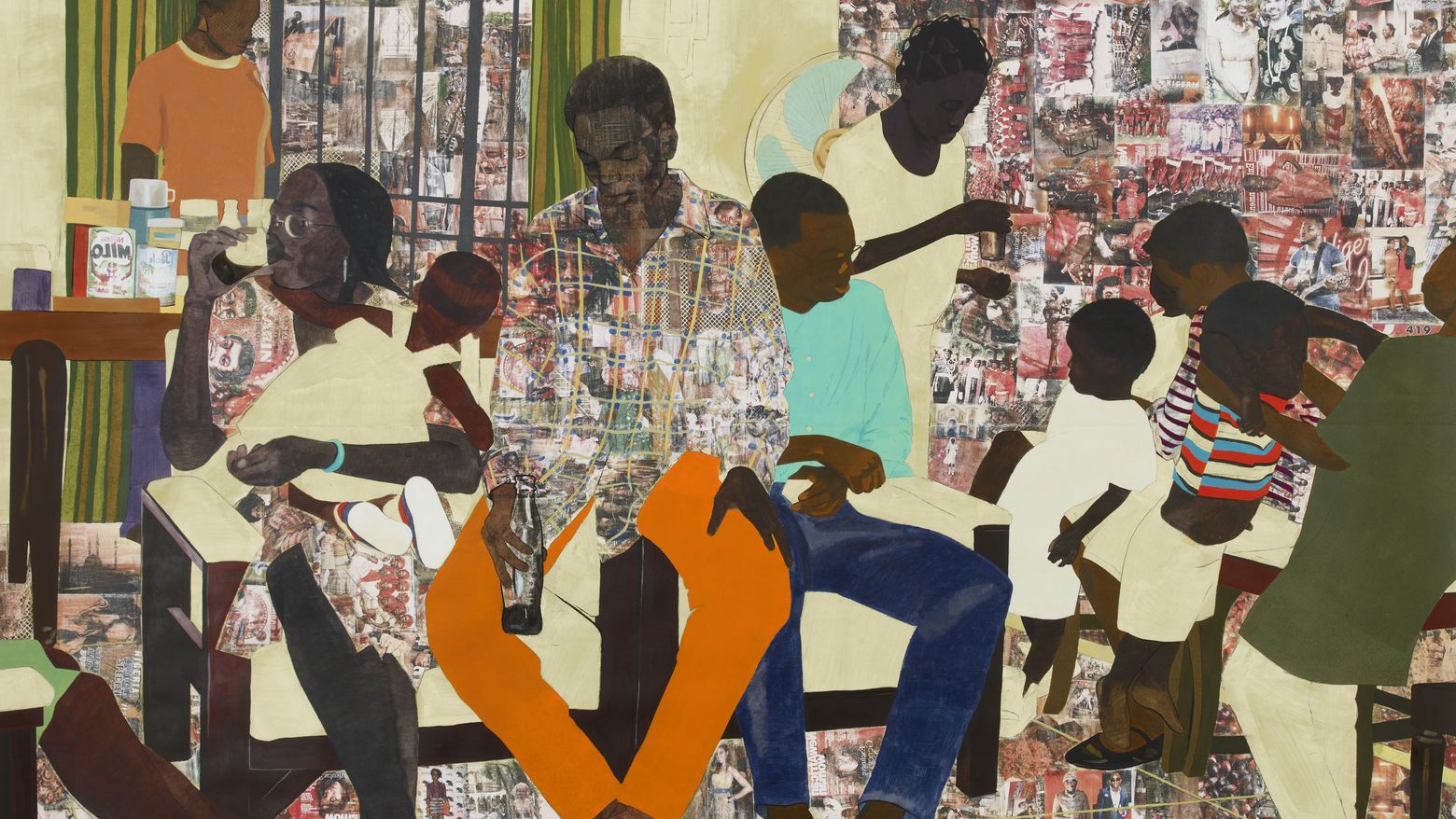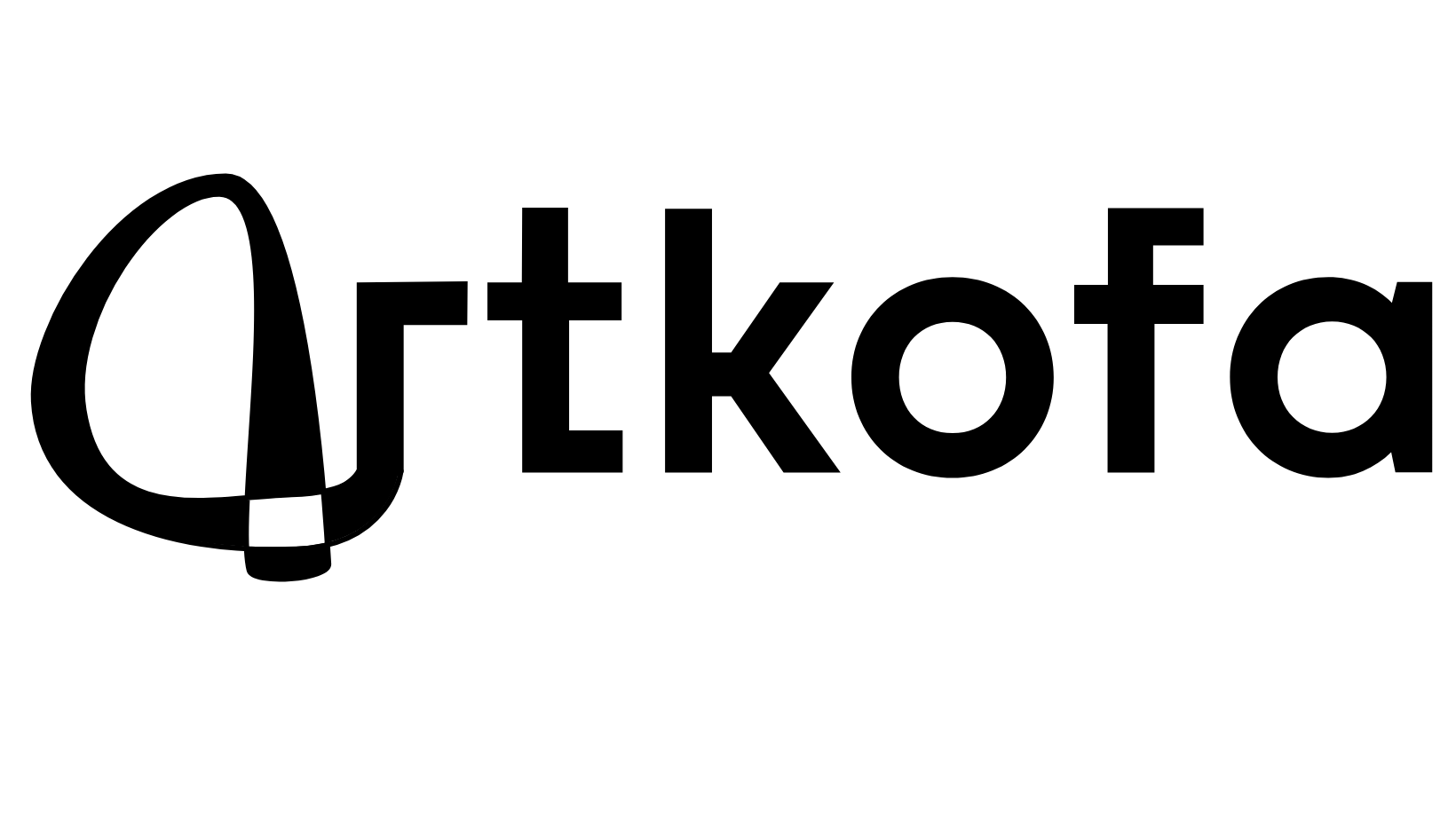No products in the cart.

It’s time to invest in African contemporary art, a skyrocketing market – here’s why.
With a quick Google search, it is not difficult to find examples to support the statement that gives title to this article: the market for African contemporary art has never been so hot. Major news media such as Forbes, CNN and The Economist point to “The Africa We Ought To Know; U.S. Museums Reconsidering The Continent“, to “The irresistible rise of African art“, which “is starting to become a big deal in Africa“. New commercial and artistic ecosystems dedicated to African art are emerging and growing, such as the 1-54 Contemporary African Art Fair, founded by Touria El Glaoui, which in less than ten years since its foundation in 2013 has already consolidated itself and expanded to London, Marrakech, New York and Paris, or even Art X Lagos, the first international art fair in West Africa, launched in 2016 and already an unavoidable player of the global art scene.
Thus, if on the one hand, established entities from the northern hemisphere are finally risking turning their attention to the art produced in Africa, on the other, it is the very movement and organisation of African and Afrodiasporic artists, collectors and cultural agents that denounce institutional racism and force an urgent redrawing of the limits historically imposed on the continent. Both on a narrative-symbolic and on a commercial level, the strength of contemporary black art is no longer a promise – it is a certainty.
In dollars: Africa hits highest value ever in art sales and boasts best global increase projection for NFT revenue
The numbers don’t lie. According to the latest report released by ArtTactic, covering data from 2016 to 2021, sales of modern and contemporary artworks by African creatives reached an all-time high last year: $72.4 million, which represents an overall increase of almost 45% from 2020 and an average price increase for each work by just over 20%. Hannah O’Leary, head of modern and contemporary African art at Sotheby’s, one of the world’s largest brokers of fine and decorative art, says that since African art auctions began in 2017, the company has broken 90 world records.
In the online sphere, sales for the same sector have also increased by 6.2%, reaching almost $8 million. An unprecedented NFT investment opportunity looms as Africa amasses $105.6 billion in cryptocurrency payments between July 2020 and June 2021 – an increase of 1200% over the same period last year – and places Nigeria, Morocco, Kenya and South Africa in the top 30 countries for crypto use, according to a report by blockchain data platform Chainalysis.
The revenue from art held and transacted on Metaverse is expected to show an annual growth rate of 30.78% in Africa, resulting in a projected total amount of US$116.70m by 2027. Based on data released by Statista, this forecast is even more encouraging than the growth rates calculated for the American and European market, both around 26%.

“Man in a Pool III” (2021) by Osinachi © Christie’s Images.
The new stars that re-signify the contemporary in Africa
If for a long time the term “African art” was doomed to comprise the production of masks and statues, alluding to traditions frozen in time and reinforcing the mythical illusion of a continent outside history, many artists are now redefining it. Also according to a study compiled by ArtTactic, young African creatives have also reached a historical high in sales, generating $24.9 million in 2021, a surge of 121% in comparison with 2020.
In the global ranking of on-the-rise artists in July, it is Nigerian Njideka Akunyili Crosby who tops it, and there are many who have seen the prices of their artwork skyrocket in the last five years. Moreover, in 2021, a year when the market was still recovering from the pandemic shock, the average price level for younger artists rose by almost 170%. The value of the works of Ghana-born award winner Amoako Boafo, for example, increased a hundredfold in only two years. In December 2021, the artist sold his portrait “Hands Up” (2018) for $3.3 million at auction at Christie’s Hong Kong. From the Ivory Coast to the world, pieces by Abdoulaye Diarrassouba, better known as Aboudia, have also been a great sales success: at Galerie Cécile Fakhoury, “Untitled (2015)” sold for 835% more than the gallerist’s estimates. These are not isolated cases: coming from different countries, influenced by diverse cultures and references, these artists give name, surname, voice and relevance to the art produced on the African continent today – and that, although concerning very particular realities, have the common merit of breaking through the long, rigid walls of the art market, opening it for other gazes.

“5 Umezebi Street, New Haven, Enugu” (2012) by Njideka Akunyili Crosby.
The profile of the African contemporary art collector
In 2022, the ÌMỌ̀ DÁRA platform conducted another annual survey about the profile and buying behaviours of 253 African art collectors from around the globe, and found that while almost 90% own classic, “traditional art” pieces, 46% also included modern and contemporary artworks in their collection. Of these collectors interested in African art produced from the second half of the 20th century onwards, almost a third are aged between 25 and 45 – a significantly younger portion who actively look to their own generation for new talent.
53% of this universe correspond to “active collectors”, that is, professionals who have been collecting modern and contemporary art continuously and for some time already. 17% fit into the group of “mature collectors”, who have been working as such for a long time, but not as actively now as before. Thus, there still remains a significant portion of “young collectors”, interested people who have just started their careers.
One of the world’s fastest-growing consumer markets, Africa is projected to boast 1.7 billion consumers by 2030, whose combined consumer and business spending will total over $6 trillion, according to The Brookings Institution. As the number of millionaires in the continent also increases — from 2020 to 2021, Africa amounted to nearly nine percent more high net worth individuals (HNWIs) —, as well as the investment in new cultural institutions and facilities — since last year, a striking number of cutting-edge museums have been announced to break ground (National Centre for Art, Crafts and Design, in Cape Verde; Bët-bi, in Senegal; Emo Museum of West African Art, in Nigeria; Grand Egyptian Museum, in Egypt; Pan African Heritage World Museum, in Ghana; and Ngaren – Museum of Humankind, in Kenya, are just a few examples) —, the local demand for contemporary art will most certainly keep moving up.
Since 2018, the percentage of collectors who plan to increase their investments in African contemporary art, in the next two years, by more than 25% has almost doubled, going from 9% to 16%. As confidence in this niche market increases, the criteria of these investors are also becoming more autonomous: around 20% of the sample universe take as a decisive factor the artists’ exhibitions record, or their representation in museum collections, while almost 80% claim to buy based solely on what they like and are drawn to. Between art experts and businesspeople looking for investment diversification, then, there is – however intimidating the art world may seem at first – a space to be filled by art lovers of all ages and backgrounds.
There’s still a long way to go: why invest now
The outlook is optimistic, but it’s important to keep our feet firmly on the ground: art from Africa and South America combined accounts for less than 4% of global art sales today. So perhaps this is why now is the best time to place your bets on African creatives: their pieces still have a general lower entry price compared to other categories, whilst their potential for growth and appreciation is definitely greater.
More than an unparalleled financial opportunity or a trendy theme, the globalisation of culture is expected to arouse a genuine and permanent desire for the decentralisation of narratives: art, more than any other sphere of human life, is capable of operating additions of reality, of contesting and redistributing agencies and reviving sensibilities for the present and the future. Thus, much beyond their monetary worth, the great value of African art is to offer to the aesthetic, social and political debate the experiences and images of bodies that for many centuries have been silenced, massacred and homogenised by colonialism – and, in this sense, not only to allow us to rediscover Africa by Africans, but the whole world.
We hope that more and more people will be interested in and qualified to appreciate and collect the art produced on the African continent today. With the creative foment in Africa, reverted into a source of income for an entire generation of creators, new movements, environments and communities of exchange, innovation and thought will also continue to emerge. A thought that urgently needs to participate in and shake up institutional circuits, but whose end result will be, above all, the democratisation of access to and the production of art history, art and history.

